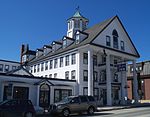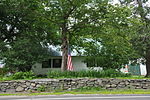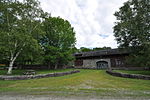Edward H. Lane House
Greek Revival houses in New HampshireHouses in Grafton County, New HampshireHouses on the National Register of Historic Places in New HampshireLittleton, New HampshireNational Register of Historic Places in Grafton County, New Hampshire ... and 1 more
Queen Anne architecture in New Hampshire

The Edward H. Lane House is an historic house located at 16 Cottage Street in Littleton, New Hampshire, United States. With a construction history dating to about 1830, it is a good architectural catalog of changing trends in local styles and economic circumstances. Its front portion, dating to the late 19th century, is a good example of Queen Anne Victorian architecture. The house was listed on the National Register of Historic Places in 1980.
Excerpt from the Wikipedia article Edward H. Lane House (License: CC BY-SA 3.0, Authors, Images).Edward H. Lane House
Ammonoosuc Recreational Trail,
Geographical coordinates (GPS) Address Nearby Places Show on map
Geographical coordinates (GPS)
| Latitude | Longitude |
|---|---|
| N 44.305 ° | E -71.7675 ° |
Address
Ammonoosuc Recreational Trail
Ammonoosuc Recreational Trail
03561
New Hampshire, United States
Open on Google Maps







